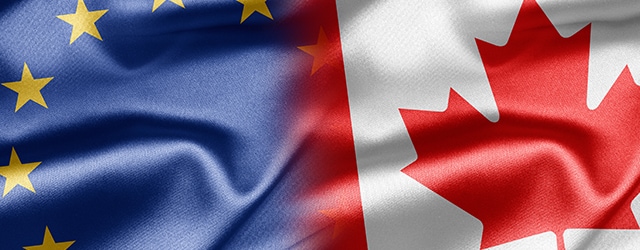The long-awaited Comprehensive Economic and Trade Agreement (CETA) between the European Union and Canada was approved by the European Parliament in mid-February.

It is the largest bilateral trade agreement Canada has signed since the North American Free Trade Agreement (NAFTA) was established two decades ago.
CETA negotiations began in 2009 between Canada and the European Union; and although they concluded in September 2014, formal closure of the agreement was held up by EU requests for an investor-state dispute settlement mechanism.
In an era where US president Donald Trump has called getting out of the Trans-Pacific Partnership “a great thing for American workers,” and where Brexit has created uncertainty as to what multilateral trade will look like in the future, the CETA deal stands as an example of how others are negotiating trade.
“For the most part, Canada has benefited from open access to other markets,” says Glen Hodgson, an economist and senior fellow with the Conference Board of Canada in Ottawa. “That philosophical starting point is different from what is going on in the United States right now,” he adds. “But the Trump line has gone from tearing up NAFTA, to renegotiating NAFTA, to tweaking it. And there is a recognition that Canada is the biggest market for 35 US states.”
CETA is considered a more modern trade deal compared to the 1988 US-Canada Free Trade Agreement, or NAFTA, which superseded it. CETA, beyond eliminating tariffs, will allow Canadian companies to bid at all levels of the EU government procurement market (estimated to be worth $3.3 trillion).
Also, the agreement allows for cooperation and conformity on regulations; allows Canadian service providers to work temporarily in the European Union; and provides protocols to allow some Canadian companies to have their products tested and certified in Canada for the EU market.
“Canada and the EU moved into a deeper agreement, which includes procurement and professional recognition of degrees, and all these other things that are strictly speaking, no longer trade,” says Amy Verdun, professor of political science at the University of Victoria in British Columbia. “We do not yet have the full vision of the possibility of integration that is possible between Canada and the EU, and there isn’t one model out there.”
There is, of course, much to do. A Conference Board of Canada analysis showed that many Canadian companies that export to Europe have found it difficult to adapt to EU norms that are different from those in North America. However, if CETA’s provisions manage to reduce the impact of EU regulations, that would lower another barrier to trade, which could make it easier to sell to Europe, particularly for smaller companies.
Canada is still forging ahead on trade deals that go well beyond reducing tariffs. It may act as a model to others, or not, but it will certainly be looked at for its modern approach to trade in an era where globalization is somewhat fractured.



